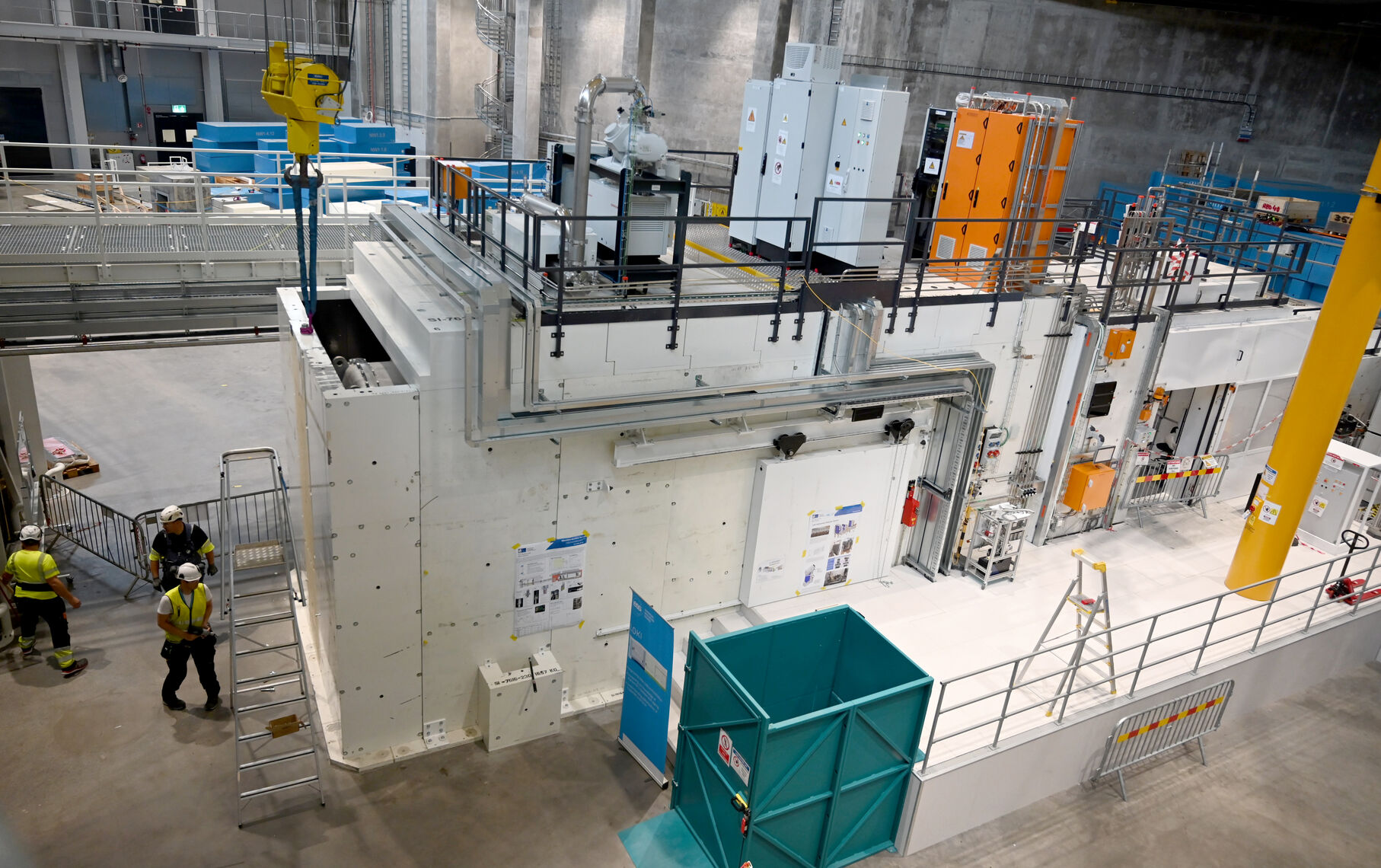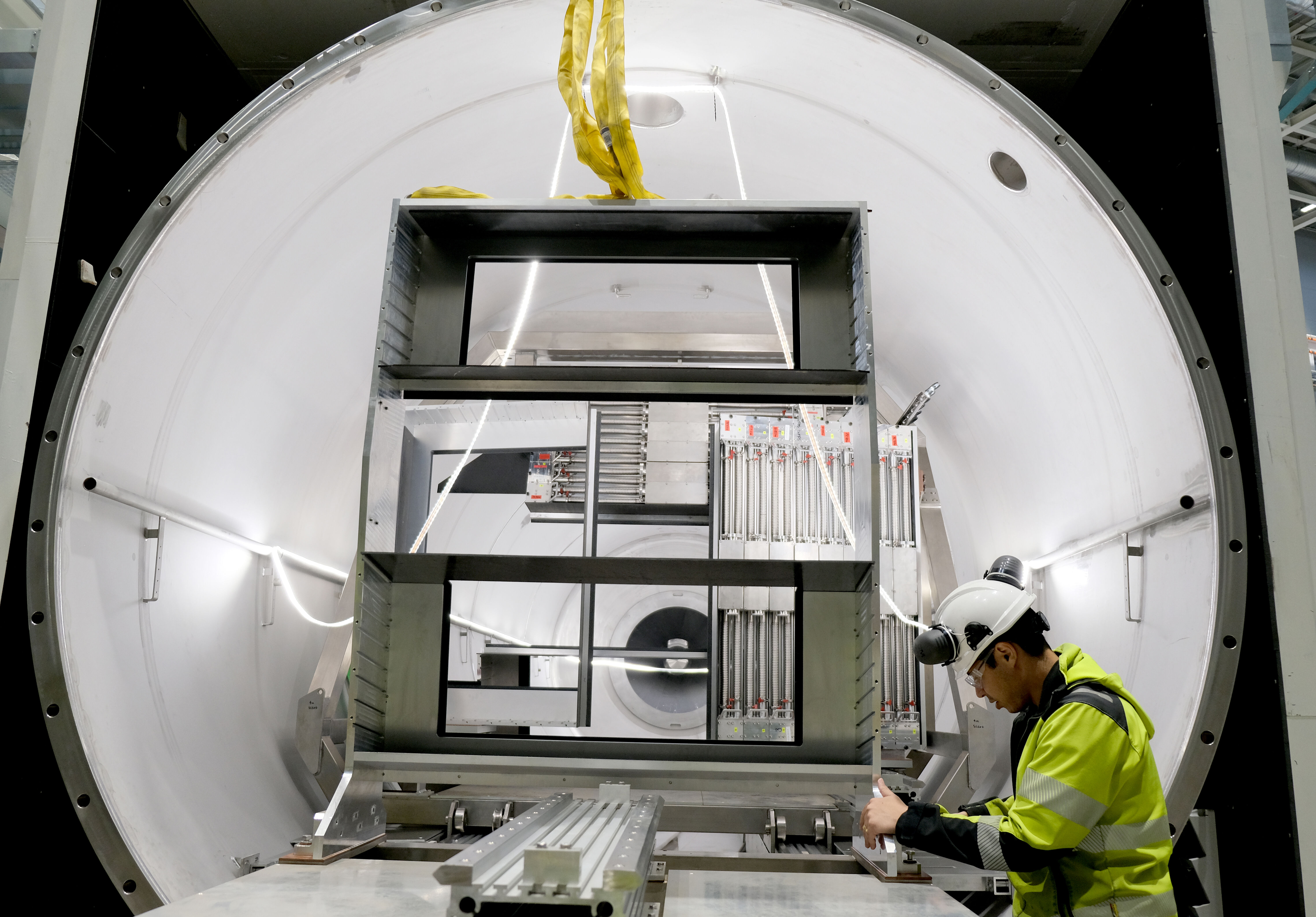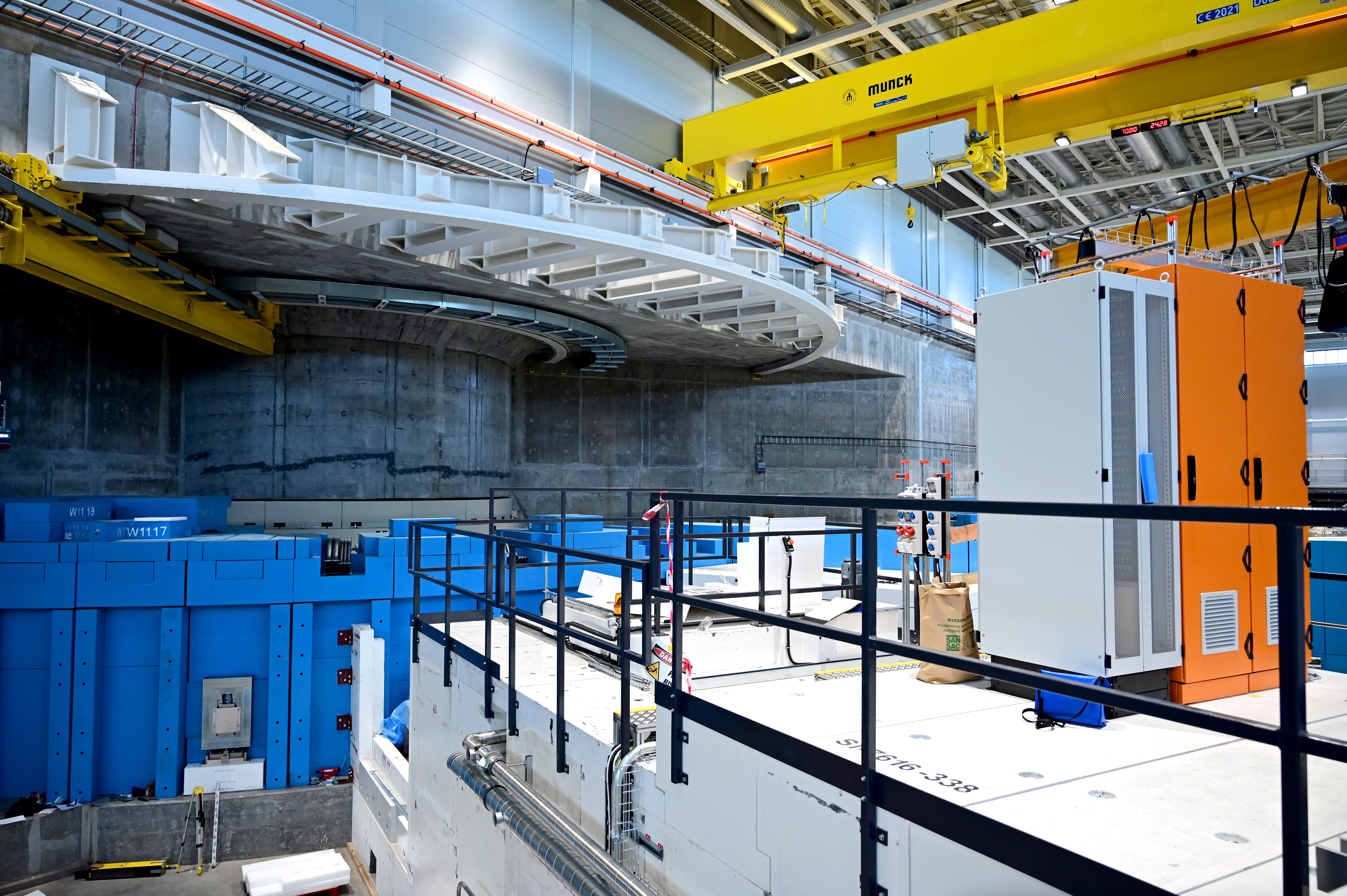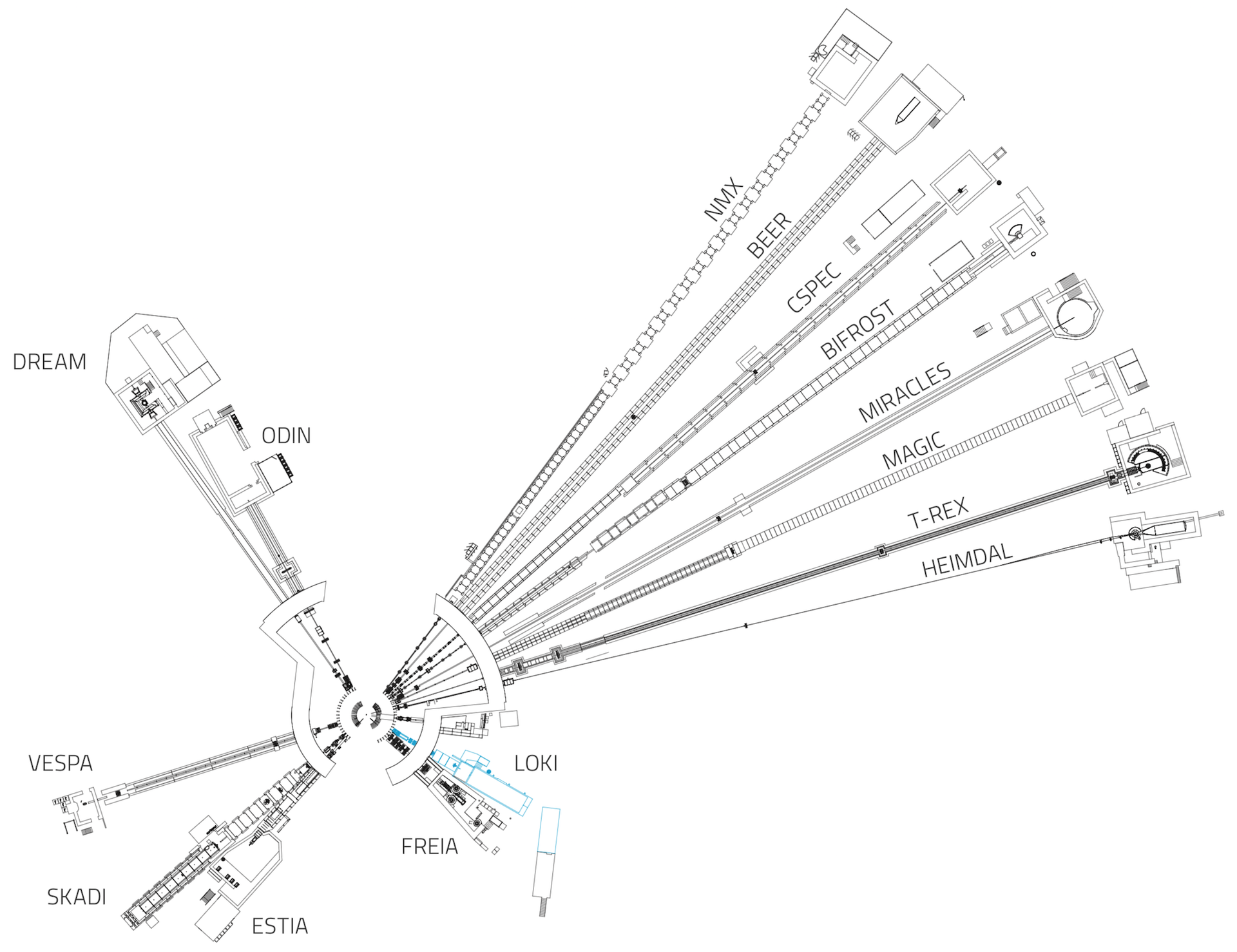
The installation phase of the LoKI instrument at ESS is now complete, and the instrument is set to begin its cold commissioning phase – a major milestone for ESS as it progresses toward full operations. LoKI, an advanced Small Angle Neutron Scattering (SANS) instrument, has been developed and delivered through a close collaboration between ESS and its UK In-Kind Partner, ISIS Neutron and Muon Source. This shared effort exemplifies the power of partnerships between scientific institutions.
“This milestone celebrates more than just engineering achievement - it’s a testament to the strength of the partnership between ISIS and ESS,” says Andrew Jackson, Head of the Large Scale Structures Division at ESS. “At ESS, we’ve learned an enormous amount working closely with the ISIS team, who have delivered exceptional equipment and documentation. Their commitment and support at all levels have been vital to the success of this project.”
LoKI is an instrument that will support soft-matter, materials, and life-science researchers that need to make advanced nanoscale measurements. Areas of research that will benefit from LoKI include: understanding the flow behaviour of complex fluids such as personal care products and pharmaceutical formulations; examining the formation and stability of lipid nanoparticles used for drug delivery; understanding the interactions and structure of proteins in solution; and studies of polymer composites and smart materials under strain.
A decade of collaboration between ISIS in the UK and ESS made LoKI possible. Designed to leverage the unprecedented capabilities of ESS as the world’s most intense neutron source, LoKI required innovative approaches, rigorous design, and careful execution. Built and pre-assembled by ISIS, the instrument was transported to Sweden and installed in the short instrument hall at the ESS site in Lund. It is now one of the first ESS beamlines to complete installation and enter the cold commissioning phase (commissioning of all systems pre-neutrons). LoKI will be among the first instruments to receive neutrons at ESS.
“The LoKI instrument project has been a huge collaborative effort between ISIS and ESS for nearly a decade,” reflects Jim Nightingale, ISIS In-Kind Instrument Project Manager for LoKI. “It has been a once-in-a-lifetime journey: from the initial excitement of contributing to a new facility, through the organised chaos of a large-scale infrastructure project, to the focused determination to make it all work.”
From engineers to technicians and scientists, the collaborative effort has underscored the depth of expertise and dedication within the teams at both facilities. Hands-on engagement throughout the instrument lifecycle was essential, with close cooperation across both organisations.
This sentiment is echoed by team members on both sides of the collaboration.
“The ISIS facility, with its decades of expertise and commitment, has delivered an instrument to high-quality standards which is now nearing operation,” remarks Clara Ines Lopez, Senior Integration Engineer at ESS. “This collaboration hasn’t just been about professional growth; it’s fostered strong friendships and a spirit of mutual support.”
The partnership continues as teams now turn their attention to FREIA, a UK-led liquids reflectometer that will form part of the second wave of ESS instruments.
Meanwhile, LoKI looks ahead to its next milestone – hot commissioning with neutrons in 2026 – with confidence grounded in strong collaboration and shared commitment.
“It has been a joy to work with outstanding scientists, engineers and technical staff at both facilities... I am confident that once we have neutrons, we will successfully ‘hot’ commission the instrument and begin LoKI’s scientific mission.”
Judith Houston, Lead Scientist, LoKI, ESS



























